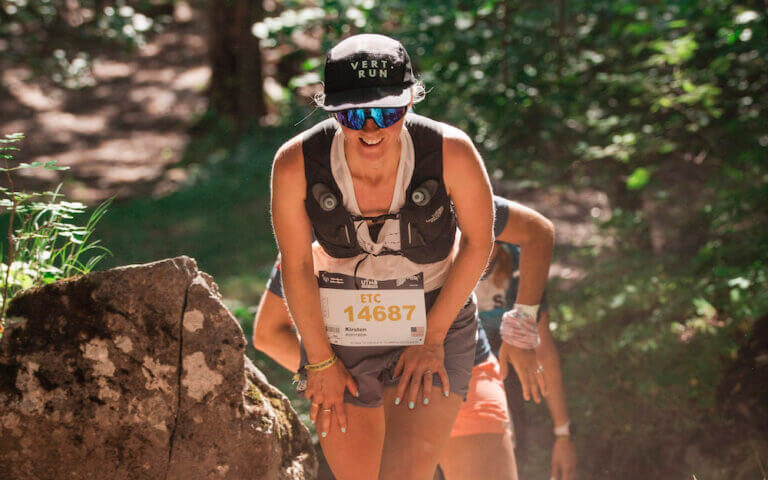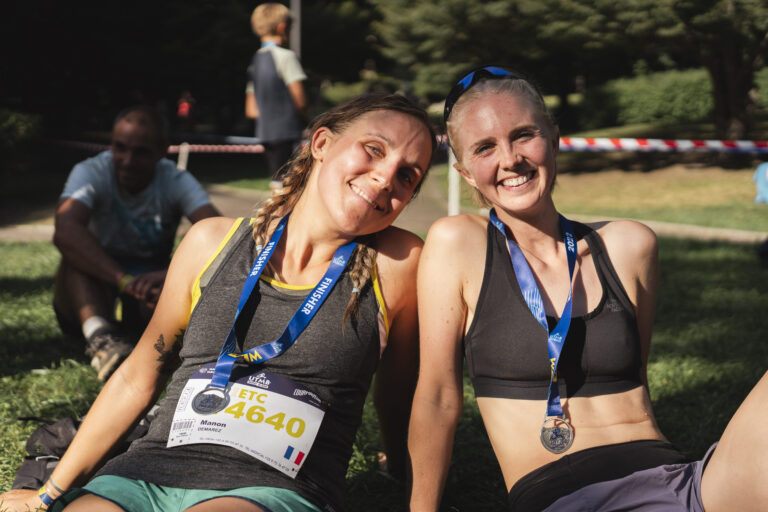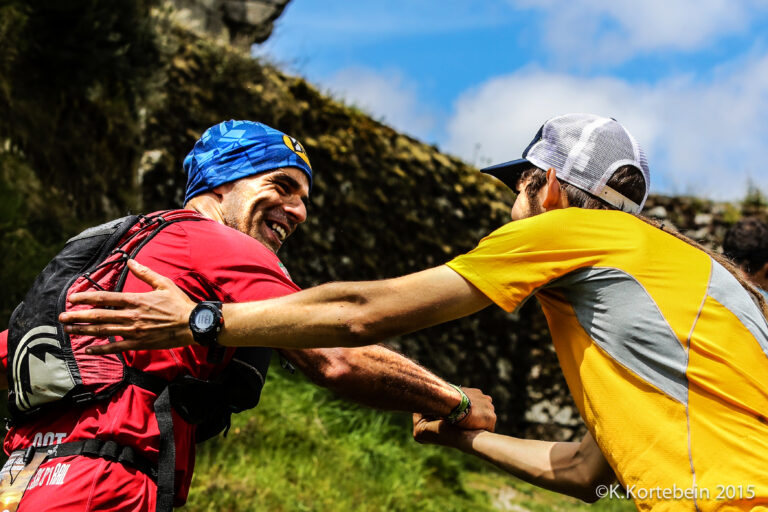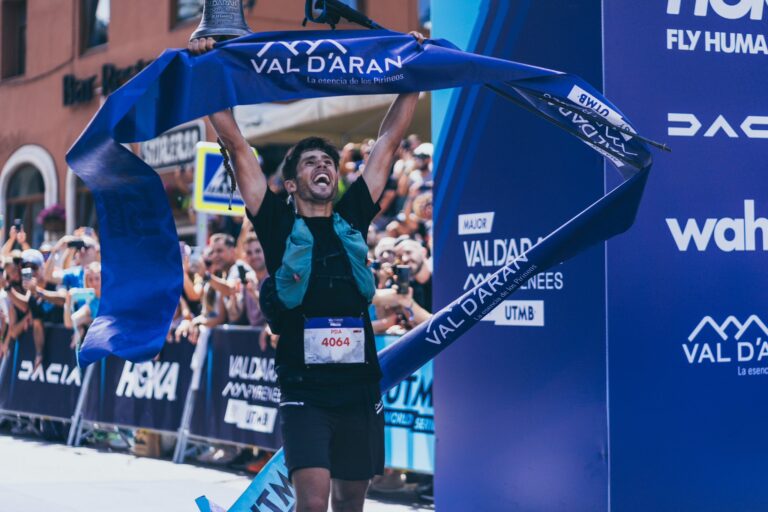Covid-19 has left a strong mark on all of us. Regardless of if we’ve ever tested positive for Covid or not, the way that the world changed–and continues to change–because of the virus has impacted all of our lives. For me personally, the lockdowns left me with a clear imbalance on how to approach my training. After not being able to run outside for months in 2020 (the lockdowns here in Europe where I live were very strict), I now see the freedom and opportunity of just being able and allowed out as a gift. This is great, but can also be dangerous. It’s the perfect recipe for overtraining, overdoing it, and having the feeling that every day needs to be an epic adventure.
(Had Covid and not sure how to start training again? Check out our new 2-week training plan: “Training after Covid for Trail Runners.” It’s designed to make sure you’re getting back at it safely and responsibly without over-doing it.)
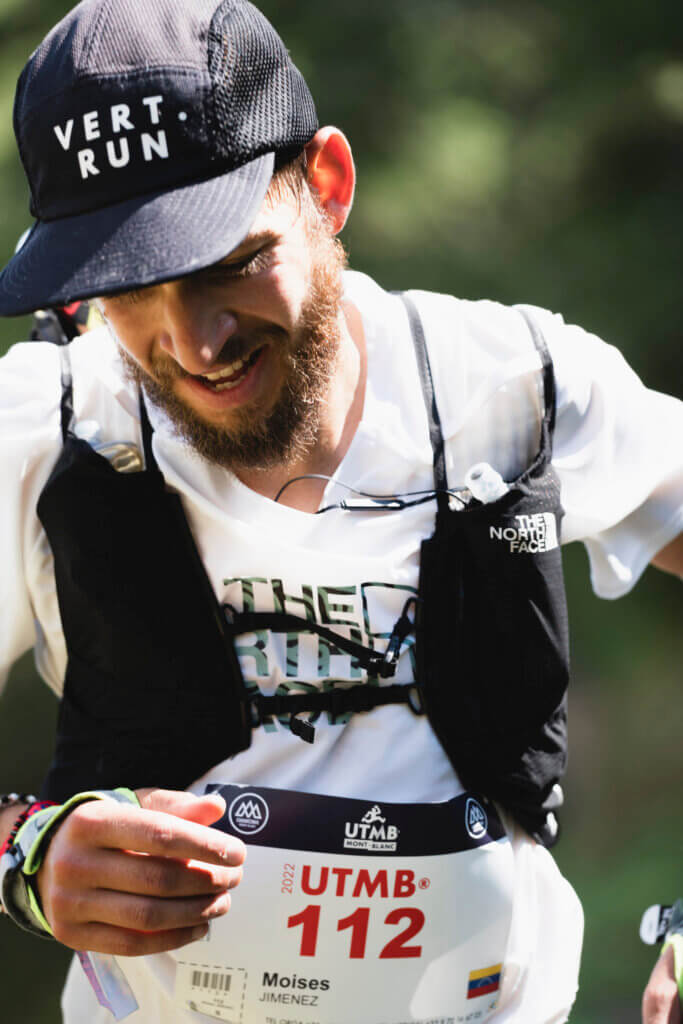
For me, this feeling of “FOMO” has been one of the biggest imbalances that Covid and lockdowns left me with: the incorrect feeling that if I go for an easy run on Saturday, I feel bad, or like I’m “wasting” an opportunity that I could be doing something more epic with… but that’s not right. It’s ok to take it easy. And not only is it okay: it’s actually necessary to take it easy when you need to in order to be a healthy, lifelong trail runner.
The idea of this article is to share some insights on ways we recommend approaching your training after having Covid, or being sick in general. (And even for those of you who have never tested positive, it’s a good reminder of how to stay balanced in your training–especially if you’re feeling the way that I have post-lockdown.)
Before we dig in: it’s very important to state that we are not physicians or doctors, and this is definitely not medical advice – we always encourage you to check with your own doctor when starting running after Covid, and make sure that you follow their advice. The best way to answer the burning question of “is it safe to run after Covid?” is not only by listening to your body and building your training gradually, but by listening to your doctor.
How to start running again after covid: the basics.
While everyone’s experience with Covid is different–some of us are totally asymptomatic the whole time, while other runners with long Covid have it much harder–there are some common things that Covid shares with any illness, and the advice that our coaches at Vert.run always give our athletes when they’re sick is the same basic advice that applies to Covid.
What advice is this?
Well, let’s say that you had Covid. Not an extreme case, but you were sick and maybe even had a fever for a couple of days: the first thing you must do is of course stop running, stop training and stop being active. Sorry about that, but it’s important to put it bluntly.
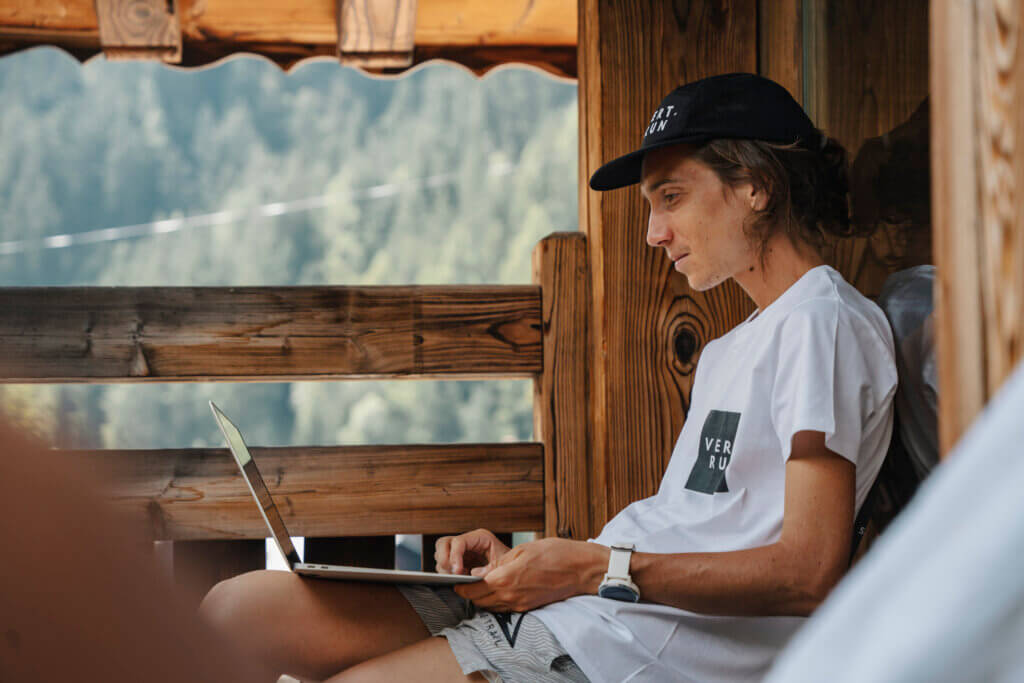
I have a personal rule for when I get a fever: for every day that I have a fever, once I’m back at training I take two very easy days. A “very easy day” is a day where you can move and be active, but nothing that gets your heart rate too high or that adds extra fatigue. So if I was sick for a week and had 2 days of fever, I take 4 very easy days before even trying to do something “big” or intense.
Why is it so important to rest when we are sick? Well, the goal is to focus on recovery – by stopping running, you are not getting your heart rate up at all and thus you are making sure that all of your energy is focused on one thing: “recovering.” Recovery takes a huge amount of energy, so be kind to yourself and listen to your body.
Through this process, make sure to stay super hydrated. Also make sure to eat very well, even if it’s hard, and sleep as much as possible.
We also recommend that you measure your heart rate and heart rate variability on a daily basis. I personally use this app. I love it and I think it’s a great app. Measuring my heart rate variability helps me to always have a clear picture of where my body is at in terms of recovery. If my HR is 5 beats per minute above my normal range, that’s fine…but if i’m 10 or even 15 BPM above my normal, that’s not a good sign. When this is the case, 90% of the time it means that or I’m getting sick or I’m still sick – the other 10% of the time is because I’m recovering from a very hard race (like a 100 miler ultramarathon like UTMB, for example).
Follow your feelings and listen to your body. Make sure that when you feel almost ready to get back to running, that you don’t get back to running. (Seriously.) Make sure that you are fully recovered, that your energy is back up to normal levels, that your heart rate is at a normal level and that you have the desire to run. I’ll repeat that last part: make sure you have a desire to run. Why? Because having the desire to run is a very important sign that your body gives you to tell you that you may be ready to get back at it.
Now that you have recovered, how should you get back to training? : The answer is: with a lot of caution, and one day at the time.
For the first 10 days after recovering, or even two weeks, reducing intensity is key. If you have to walk the hills, that’s ok. Make sure that your heart rate doesn’t skyrocket, always stay in the “easy” zone, always stay in control, and focus on constantly keeping a low heart rate. It’s not uncommon to have post-Covid consequences like heart inflammation that can last for months – so if you do a hard effort right away, you will only make it worse, and there’s lots of risks associated with this. For more information please refer yourself to a doctor or a certified website with information on this topic.
The objective of the first days of getting back on training is only to get back to being active, moving, reactivating muscle tension and keeping up your mental health, of course.
So make sure you take it easy. Approach returning to running after Covid as if you were recovering from an injury. If you aren’t sure what this looks like, here are some general tips:
- Walk-run: walk 3 minutes, jog 2 minutes to make sure that your heart rate is in control. You can increase this to 2 minutes walking, 3 minutes jogging and then 4 minutes running, 1 minute walking until you run the full 5 minutes. Make sure you feel comfortable when progressing from one stage tot he next, and can safely continue.
- Keep hills under control: if you approach a hill, make sure you don’t try to run it too soon. Walk it, that’s fine. Remember that even elite ultrarunners walk during races, so walking is truly also training.
- Increase your running time gradually: start with whatever feels comfortable. It can be 10 minutes, or 15 minutes, and increase it a little every day. If you start with 15 minutes and add 3 minutes a day, in 5 days you will be doing a full 30 minutes run.
- Take the days as they come: if you feel extremely energized, be cautious. Remember that if you go over the line and make a huge effort, you can put any upcoming days of training and running at risk. You can also feel like a super ultrarunner today and very bad tomorrow. Do not put much pressure on yourself, and take the days as they come. Those ups and downs are normal, but if during an “up” day you go too hard, the “down” will be lower.
Once you are feeling 100% ready, and have been cautious throughout the first few weeks/months after having Covid, you can start to approach some “activation” workouts to really see if your body is ready. Remember that everyone’s process is different–for some people, it might take two weeks to get to this point…but for others, it could take two months.
A great first step is to add some strides mid-run. So let’s say you go for a 45 minute run; around the 20 minute mark, try out a 20 second stride and recover for another 40 seconds – track your recovery, and understand if your heart rate comes down to a stable number/feeling. Make sure the stride feels normal–not easy, but normal. If that’s the case, do 2 or 3 more but keep it short. The ideal activation session should be around 4 to 6 strides of 20 seconds with a 40 second recovery between strides.
Then, follow your recovery after this session; listen to your body, define how you feel in your muscles, and in terms of fatigue and general body feeling – track your heart rate and heart rate variability if you can, and make sure there’s no anomalies in those values after this session (by measuring the morning after this session, for example.)
Once you have achieved 3 or 4 stride sessions, with a recovery/easy day in between each session, ask yourself: how am I feeling? Have I felt any negative consequences after these stride sessions? Is my body feeling better every day? If so, then we can say that you are probably ready to ramp up your training – but remember to get back at it in a logical and organic way. You don’t want to push too hard too early.
We know it’s tough to know exactly how to exercise post-Covid. That’s why we have designed a training plan to help trail runners and ultrarunners get back to training after Covid. We noticed that athletes were getting back at it too early, too hard – but with our post-Covid training plan for runners, and with your Vert coach’s support, you will be able to reduce risk of problems while also having a consistent build up. Especially if you’re thinking of running an ultramarathon after Covid, our Post-Covid plan could really help make sure that you don’t over-do it, and help you train for that ultra safely.
In any case, make sure that your sessions are progressing on a weekly basis, that you are not going too hard too early and that you are constantly checking on yourself and your body. Even a couple of weeks after feeling “alright,” your body can get back to feeling not-great–so be smart and cautious. One extra week of recovery will always be better than months of not feeling good.
Again, I can’t say it enough: follow your coach’s advice and your doctor’s advice too, and be kind to yourself.
Also, I just want to remind you that that every single athlete and runner is different after Covid–there have been some famous ultrarunners with Covid who have had a horrible time getting back to running post-Covid (like UTMB champion Xavier Thevenard, for example), but other runners feel very good right away. Just remember that feeling weak after Covid has nothing to do with how “in shape” you are. Each person is different, and there’s no rhyme or reason to it!
Here are some great quotes from some Vert.run athletes who train with our $25/month training + coaching subscription. These are real people’s stories, and they can help you understand better that you are not alone in this journey. We all share the same passions and go through the same things, no matter your level, experience or objectives.
Here are some great quotes from some Vert.run athletes who train with our $25/month training + coaching subscription. These are real people’s stories, and they can help you understand better that you are not alone in this journey. We all share the same passions and go through the same things, no matter your level, experience or objectives.
Adam Tinson: “Luckily I had no problems returning to running after COVID. I went hiking for a few days as soon as I tested negative, and I think Moi [my Vert.run coach] put an easy week into my training plan, but thankfully I had no lasting impact.
Joe Boesing: “On Sunday May 8th, I tested positive for Covid. Fortunately it’s been mostly mild but I have been sick with it this entire week so I’ve missed all my training. I’m dealing with some really good doctors who have a lot of experience treating Covid as well as Long Covid. They seem to believe that it would be best if I do not start back to training for at least 2 weeks post-symptoms due to the body still dealing with inflammation, and exercise has been linked to the triggering of Long Covid if started too early. So, I’m looking at maybe around the end of May, around the 30th before I can get back to training. Not exactly what I had planned, but better safe than sorry. Hopefully I don’t loose all my fitness but I’m sure you [my Vert.run coach] can help me rebuild it the best way possible.”
Update: By the end of June, Joe restarted training with our plan “Become an Ultrarunner” designed by Lucy Bartholomew, and he was feeling good!
Krista McCourtie: “I got COVID in late April, and it destroyed my fitness. I basically took all the rest of April-May-and June off because I literally could not catch my breath. I coach a middle school cross country team, so that started at the beginning of July, and I’ve been able to run about 10 miles in a week for about 2-3 weeks. When I think about where I was last year, it makes me sad—but with that, I really want to focus on one challenge. I want to run a 100 mile race ONE YEAR from last weekend. I figured planning a whole year will give me time to really focus on a good base and then the actual training.
The most I’ve run is 3 miles (makes me kinda laugh!) but I feel good—and no longer feel the breathing issues I had during early summer.”
Geoff Ward-Marshall: “When I caught Covid, I was changing jobs and at the end of a three week holiday. I’d used that holiday to get some consistent running in and was feeling good. I had a lingering cough after Covid and took it slowly coming back to exercise. The first week after Covid I did no exercise. The second and third weeks post Covid, [my Vert.run coach] introduced a couple of 5km walks. It was only in the fourth week that I added some jogging into those walks. Any fitness that I’d gained from my holiday was gone and I felt very very unfit with low energy and high fatigue. It felt like it took an age to get back on track. I’m all good now though. Focused on getting out for runs and watching my diet for the last couple of months (now 8kg lighter).”
Rach: “Ah covid… I was one of the ‘lucky’ ones. My covid symptoms were mild in comparison to many others. I had a head cold and a mild cough for about a week and then I was pretty much symptom free. I carried on gently walking out in the sun (away from anyone else) when I had Covid. I didn’t do any running for two weeks AFTER being symptom free, but I did put some gentle hill walks in and listened to my body in terms of either stopping and taking a break, or slowing down to get my breath back. When I did start running again, it was slow and every other day. I think I took a month to get any sort of longer runs in.
Vert, as always, was really great. You understand that the most important aspect to recovery is patience and listening to what our bodies are telling us. AND to rest. There’s no pressure at all from Vert to get back into harder training sessions.
It’s really easy to get down mentally when we are forced to take a break from training, however there is always Vert and the community there to encourage us all to ‘play the long game’ and focus on building our strength and endurance back slowly. It’s very easy to fall into the mindset of wanting to be at the level we were pre-covid.
Lessons from all this… slowing down and taking rest is THE best thing to do for our health and well-being when recovering. It gave me the opportunity to spend time with friends and family again out walking and just taking our time with a coffee. That meant a lot to me.”
Joseph Teague Nunm: “My recovery and return to running post-covid was super smooth and easy. I don’t think it really affected me that much. I allowed myself 7 days of rest during the period where I had to stay at home. Then allowed an extra day, and I think I ran on the 9th day after my positive result. I had a bit of phlegm in my throat but otherwise felt pretty good. I played a game of soccer a few days later and felt a bit more puffed than usual. I think post-covid week I ran 40km, then 43km the next then up to 62km the following week. I pretty much immediately resumed my quite active lifestyle of playing tennis, riding my bike, running and playing soccer as soon as I was released from home isolation. There’s probably not much to be learned from my experience because I don’t think the Covid infection really had much impact once the symptoms subsided and after around 14 days I was back to my normal training load again.”
Jessica Preston: “My return from Covid has taken longer than I wanted. I continued to jog slowly and biked slowly. I could not get my heart rate up because I could tell it was stressed. Vert helped me to be patient. I listened to two podcasts by Vert on Covid and recovery. I believe it takes a full 2 weeks.
As a pharmacist, I believe that Covid thrives on a sugar rich diet. If there is any advice I can give I would recommend cutting out sugar during Covid and recovery. I had much stronger days when I ate clean and didn’t have sugar.”
Jodok Dietrich: “After I was back negative, it took me 10 more days to get back to training. All together I was able to train with my usual load (about 10 hours/week) again after 4 weeks.”



